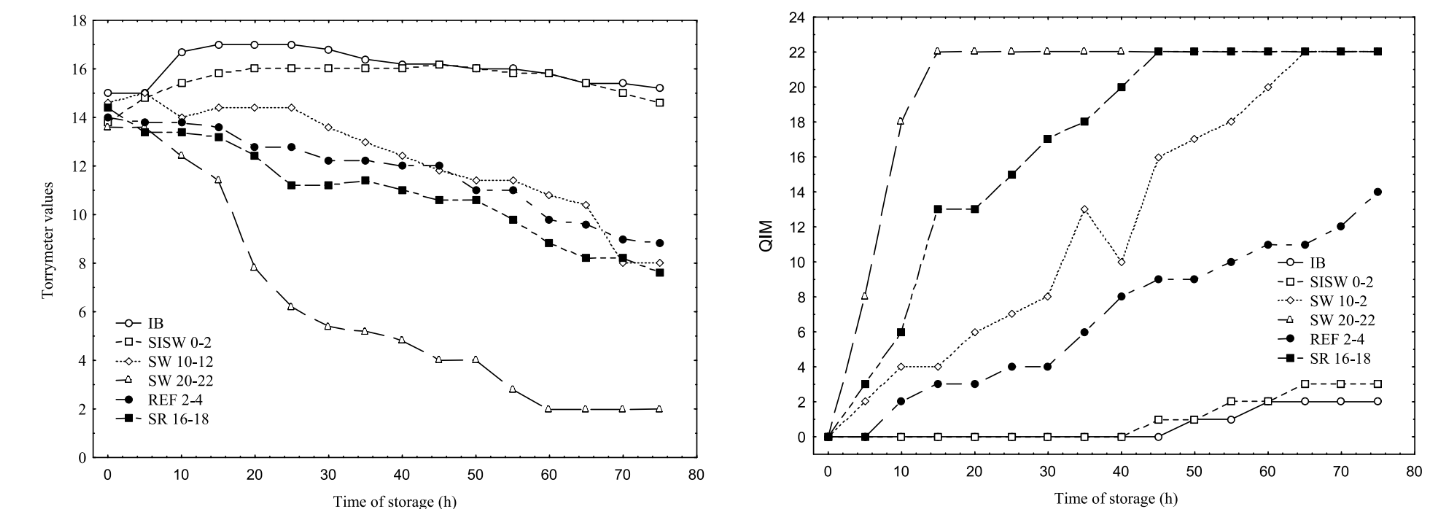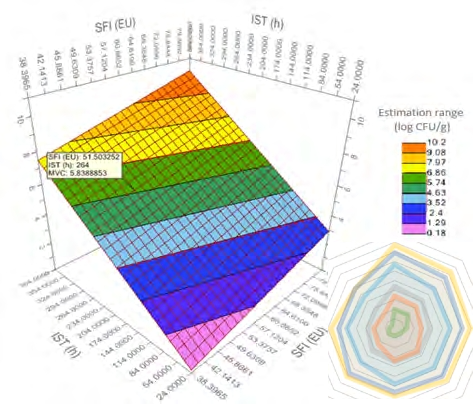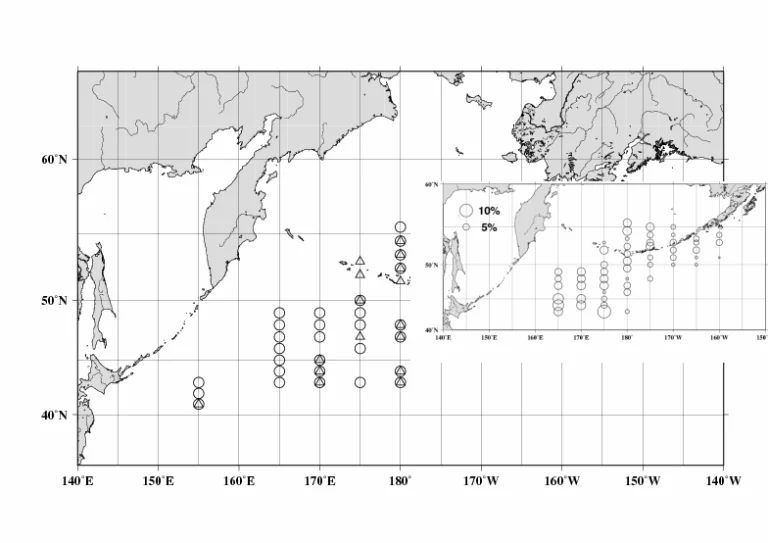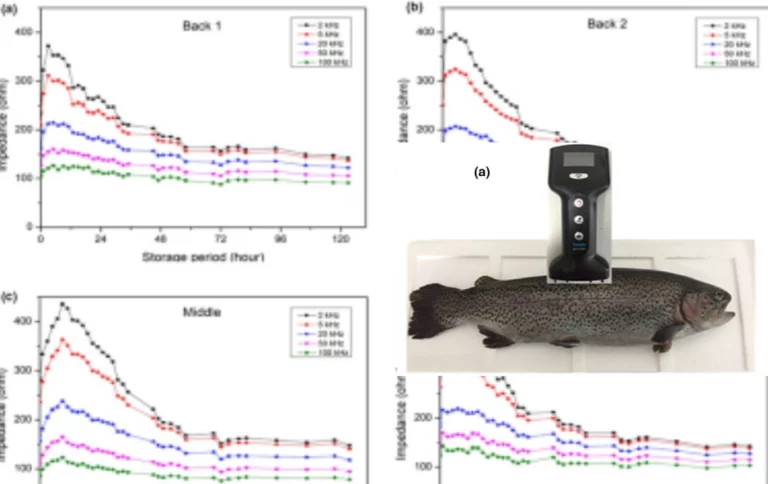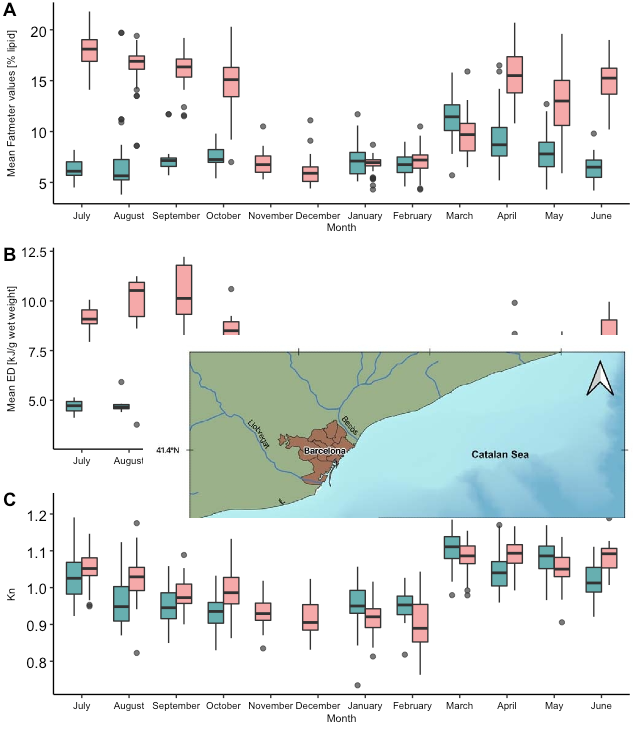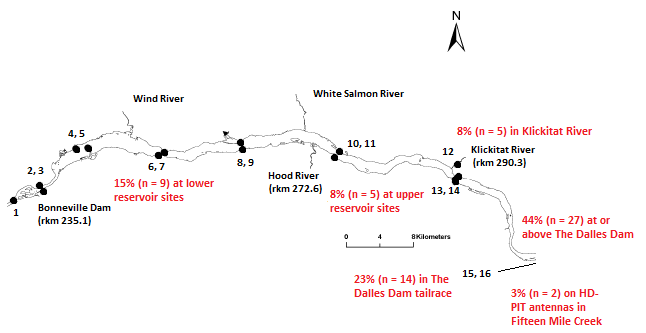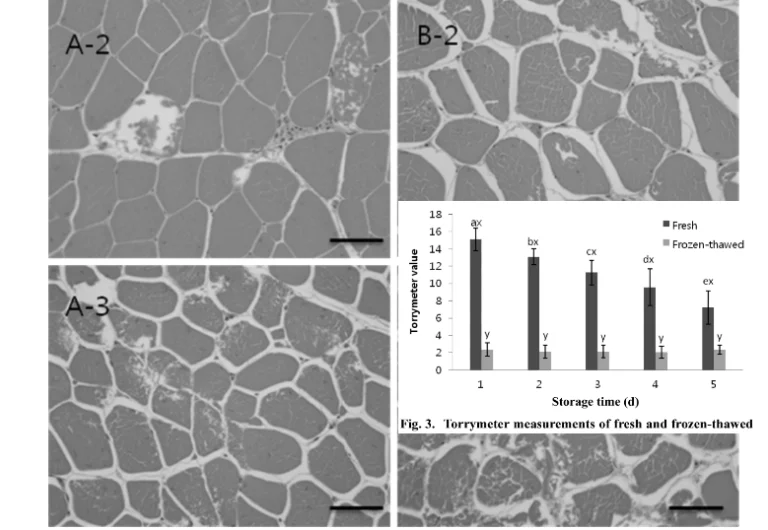Effect of different storage conditions on the dielectric properties of the Sea Bass
| Title | Effect of different storage conditions on the dielectric properties of the sea bass (Dicentrarchus labrax, L.) |
| Article Written by | Vida Šimat, Alen Soldo, Jasna Maršić-Lučić, Mladen Tudor, Tanja Bogdanović |
| Research Done at | University of Split, Croatia |
| Published Date | January 28, 2009 |
| Fish Species | Sea Bass (Dicentrarchus labrax, L.) |
| Key Words | fish, dielectric properties, storage conditions, Quality Index Method (QIM) |
What the research is about
In the world of seafood processing and quality assessment, achieving accurate and reliable measurements is a critical challenge that can have significant implications for the industry. In a recent study examining the effects of different storage conditions on the dielectric properties of the sea bass (Dicentrarchus labrax), it became evident that a new technology was needed to address this challenge. Enter the Torrymeter, a groundbreaking device that offers a solution with wide-ranging benefits for professionals in the seafood industry.
Dielectric properties and sensory assessment of sea bass (Dicentrarchus labrax, L.) stored under six different conditions over a period of 75 hours were investigated. Declines of the Fish Freshness Meter (Torrymeter) values over time were established under all storage conditions but showed variability. The correlations between the Fish Freshness Meter (Torrymeter) readings and Quality Index Method (QIM) results were studied. Significant negative correlations were found between QIM results and Fish Freshness Meter (Torrymeter) readings for samples stored in sea water (20 to 22C), storage room (16 to 18C), refrigerated room (2 to 4 C) and sea water (10 to 12 C). QIM and Torrymeter values in slurry ice and ice box samples were not in correlation.
Solving the Problem:
The Torrymeter addresses the pressing problem faced by seafood processors and angling associations, who require instantaneous and objective classification of seafood quality and freshness. Traditional methods fall short in providing accurate and consistent measurements due to species and storage condition-dependent variations. The Torrymeter bridges this gap by employing advanced technology to objectively measure seafood freshness, enabling the processing industry and angling associations to quickly determine and maintain the quality and freshness of their products.
Key Benefits of the Torrymeter:
- Unprecedented Accuracy: Built upon scientific principles and years of industry experience, the Torrymeter ensures precise and consistent measurements of dielectric changes in sea bass samples over time and under different storage conditions.
- Ease of Use: With a user-friendly interface and guided procedure, the Torrymeter simplifies the assessment process, allowing any personnel to obtain instantaneous and reliable measurements effortlessly.
- Versatility: Designed to cater to the specific needs of seafood quality assessment, the Torrymeter’s adaptability makes it an indispensable tool in various scenarios within the seafood industry, facilitating both processing and angling operations.
Ideal Use Cases:
The Torrymeter finds its true value in scenarios where time is of the essence and objective assessment is crucial. For instance, seafood processing plants can greatly benefit from the Torrymeter as they seek to maintain optimal product quality throughout the supply chain. Whether evaluating sea bass stored under different conditions, such as sea water, refrigerated rooms, or even slurry ice, the Torrymeter consistently provides accurate measurements, facilitating timely decision-making.
Testimonials from Satisfied Customers:
Many industry professionals have experienced the transformative power of the Torrymeter. Seafood processor, shares her success story: “The Torrymeter has revolutionized our operations. With its precision and ease of use, we have been able to maintain the freshness of our sea bass products at an unparalleled level. It has become an indispensable tool for our business.”
If you are seeking to take your seafood quality assessment to new heights, it’s time to explore the possibilities that the Torrymeter offers. Visit our website to learn more about this ground-breaking device and witness how it can revolutionize your operations. Seamlessly integrate precision measurement into your seafood processing or angling association workflows and unlock the true potential of the Torrymeter in enhancing seafood quality and freshness.
Research conclusion
The study on the effect of different storage conditions on the dielectric properties of sea bass (Dicentrarchus labrax) sheds light on the crucial role played by the Torrymeter device. By providing objective and accurate measurements, the Torrymeter showcases its ability to ensure seafood freshness and quality. The findings reaffirm the significance of utilizing precise technologies like the Torrymeter in the seafood industry, where subjective assessments can lead to uncertainty.
Measuring dielectric properties alone is not an “absolute” in fresh fish quality assessment although, in combination with sensory analysis, fish muscle conduction ability is a practical and objective measurement of fish quality.
Moving forward, incorporating the Torrymeter into quality control processes can enhance decision-making and elevate standards in the field. The Torrymeter stands as a reliable and indispensable asset for seafood businesses, enabling them to solidify their position as providers of premium products.
Assurant Innovations take
The conclusions drawn from this article on the effect of different storage conditions on the dielectric properties of sea bass (Dicentrarchus labrax) solidifies the Torrymeter’s value. Let’s dive closer and unlock its countless benefits for your business.
Understanding the Torrymeter:
The Torrymeter is a state-of-the-art device designed to revolutionize seafood quality assessment. Its primary function is to measure the dielectric properties of fish, offering unmatched accuracy in determining freshness levels. What sets the Torrymeter apart is its user-friendly interface and intuitively designed features, enabling even non-technical staff to operate it with ease. With simplicity at its core, the Torrymeter becomes an indispensable tool in your daily operations.
Key Benefits of the Torrymeter:
- Accuracy: The Torrymeter ensures precise and objective measurements, removing any ambiguity associated with traditional assessments. With its advanced technology, it provides reliable data to gauge the freshness of seafood, empowering businesses to maintain exceptional quality standards.
- Efficiency: Say goodbye to time-consuming and subjective evaluations. The Torrymeter streamlines the sales process, allowing for quick and consistent assessments. By eliminating guesswork, it saves valuable time and boosts productivity, ensuring you meet customer demands efficiently.
- Versatility: The Torrymeter is a versatile device with a wide range of applications. Beyond evaluating seafood freshness, it can be used to grade fish according to European Standards (E-A-B), determine if fish have been frozen or irradiated, estimate shelf-life, and monitor fish during angling competitions. Its adaptability makes it an invaluable asset for various stakeholders in the seafood industry.
- Real-Time Insights: The Torrymeter provides instant, real-time insights into the quality of seafood. Equipped with cutting-edge technology, it enables sales professionals to make data-driven decisions promptly. With reliable information at your fingertips, you can confidently ensure the delivery of superior products, gaining a competitive edge in the market.
The Torrymeter device is the epitome of innovation and precision in the seafood industry. By harnessing its power, you gain access to unparalleled accuracy, efficiency, and versatility. Embrace this transformative technology and unlock the potential to elevate your business to new heights. With the Torrymeter by your side, you’ll simplify the sales process, save valuable time, and make informed decisions backed by undeniable data. Join us on this journey towards excellence and secure a future where quality assurance is not just a goal but a guarantee. Contact us today to experience the uncharted realms of seafood quality assessment with the Torrymeter.
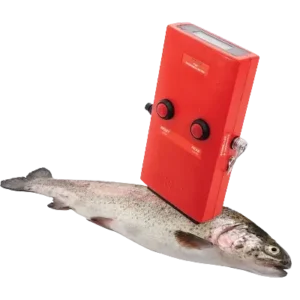
Fish Freshness Meter (Torrymeter)
To Purchase, call or email


